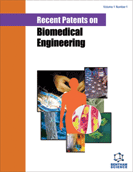Abstract
To repair articular cartilage defects in osteoarthritic patients with three-dimensional tissue engineered chondrocyte grafts, requires the formation of new cartilage with sufficient mechanical properties. The premise is that mechanical stimulation during the culturing process is necessary to reach this aim. Therefore, mechanical stimulation systems have been integrated in aseptic bioreactors for in vitro cultivation of tissue engineered cartilage. These vary from simple unconfined compression systems to advanced bioreactors in which deformation and loading are fully controlled. Fluid handling in these devices is another decisive parameter for the success of cartilage tissue engineering. Over the last decades bioreactor developments have resulted in the filing of many patents. The aim of this paper is to review these patents, categorize them according to their possibilities for mechanical stimulation and fluid handling systems and finally to discuss them in the context of the demands of a functional tissue engineered cartilage from a mechanical perspective.
Keywords: Cartilage, chondrocytes, tissue engineering, three-dimensional, ACT, bioreactor, mechanics, compression, pressure, shear, perfusion, fluid handling, computer model
 22
22

